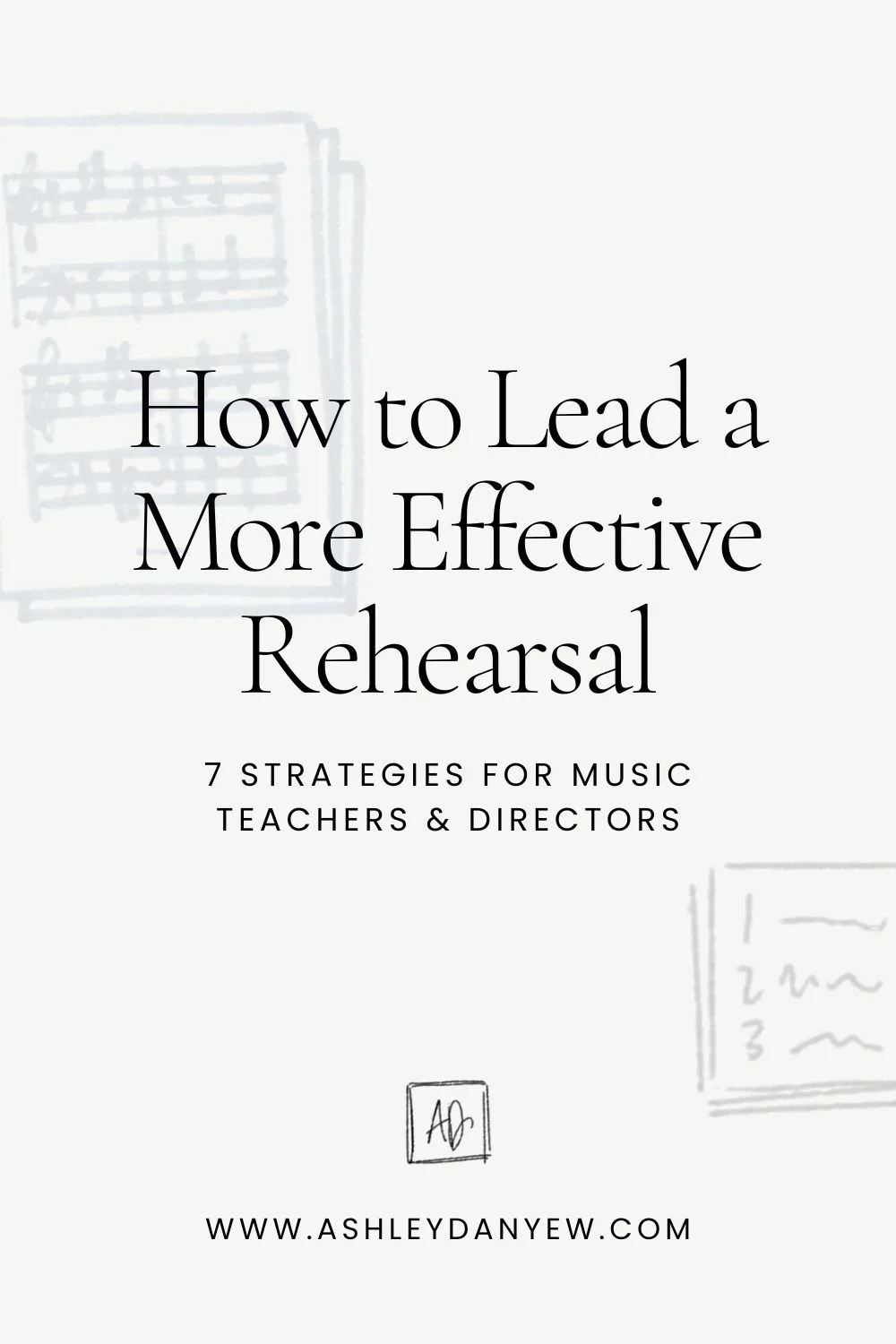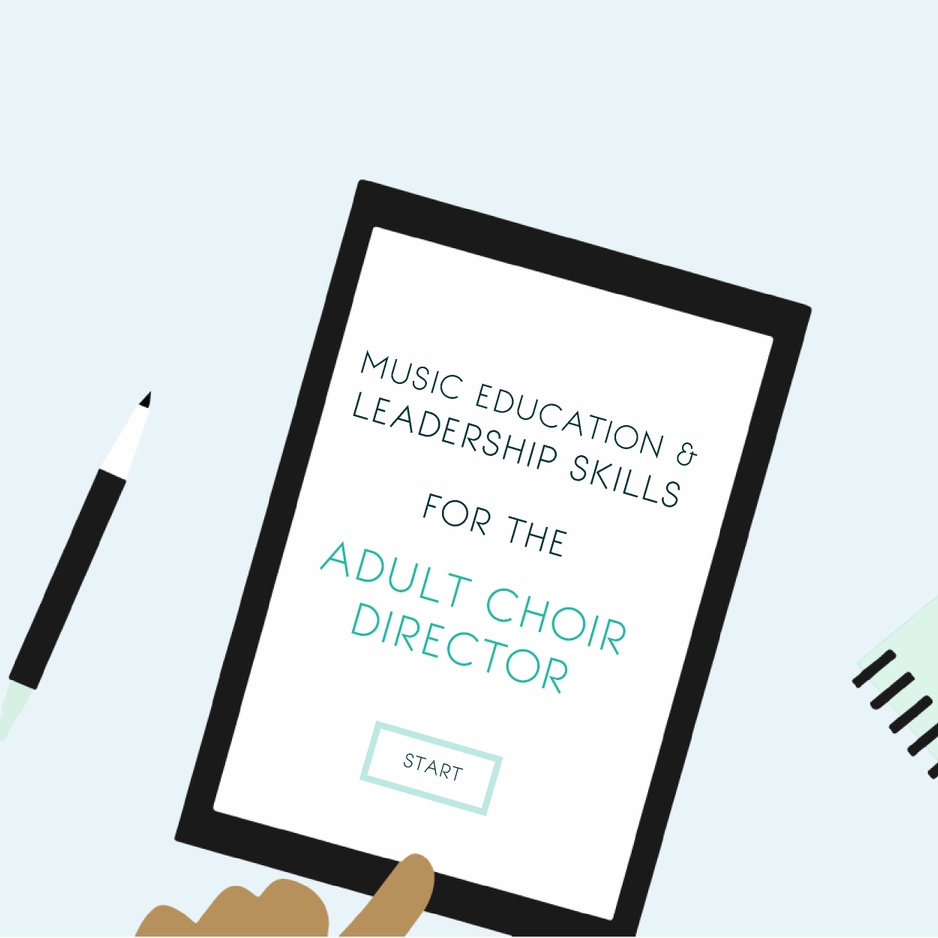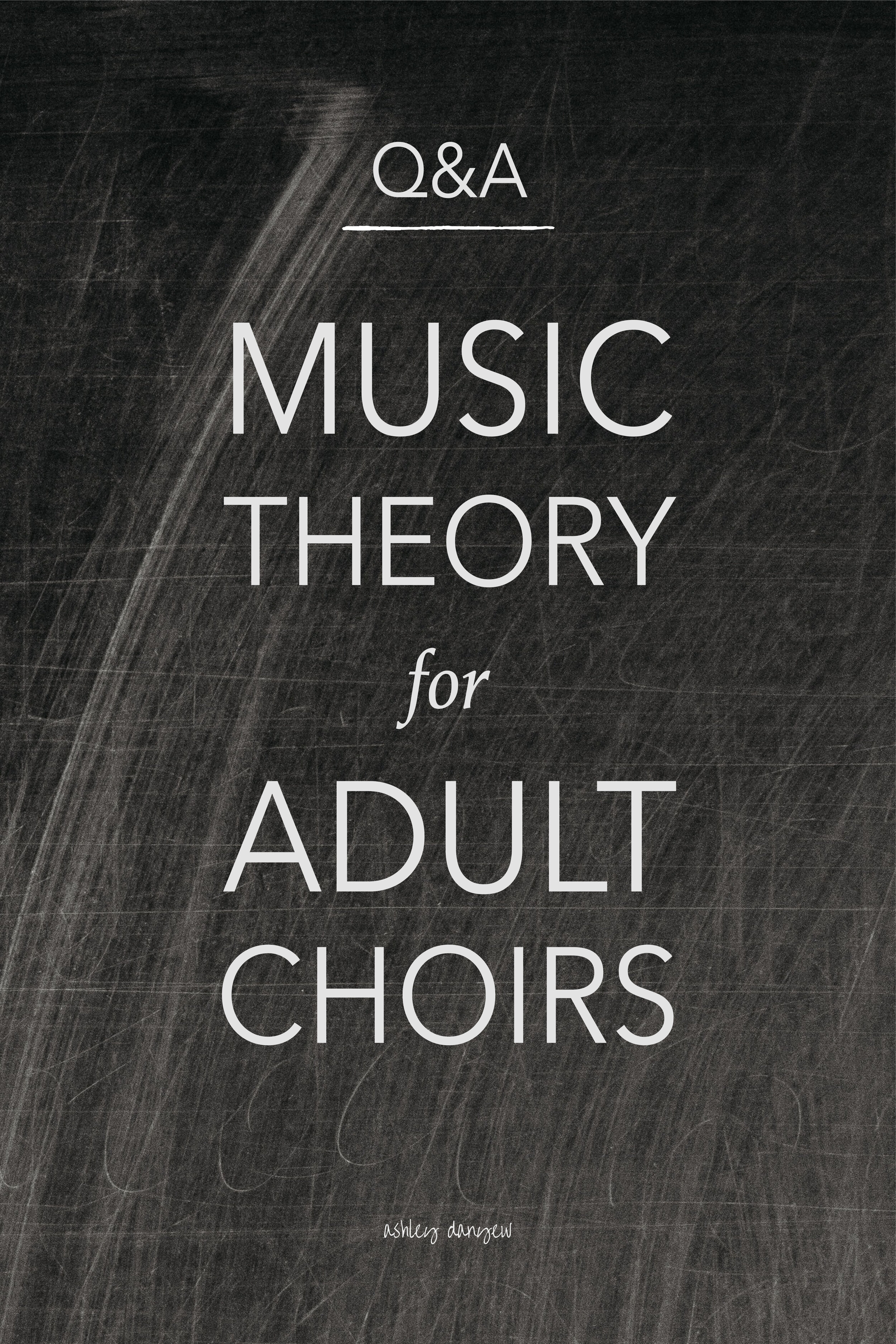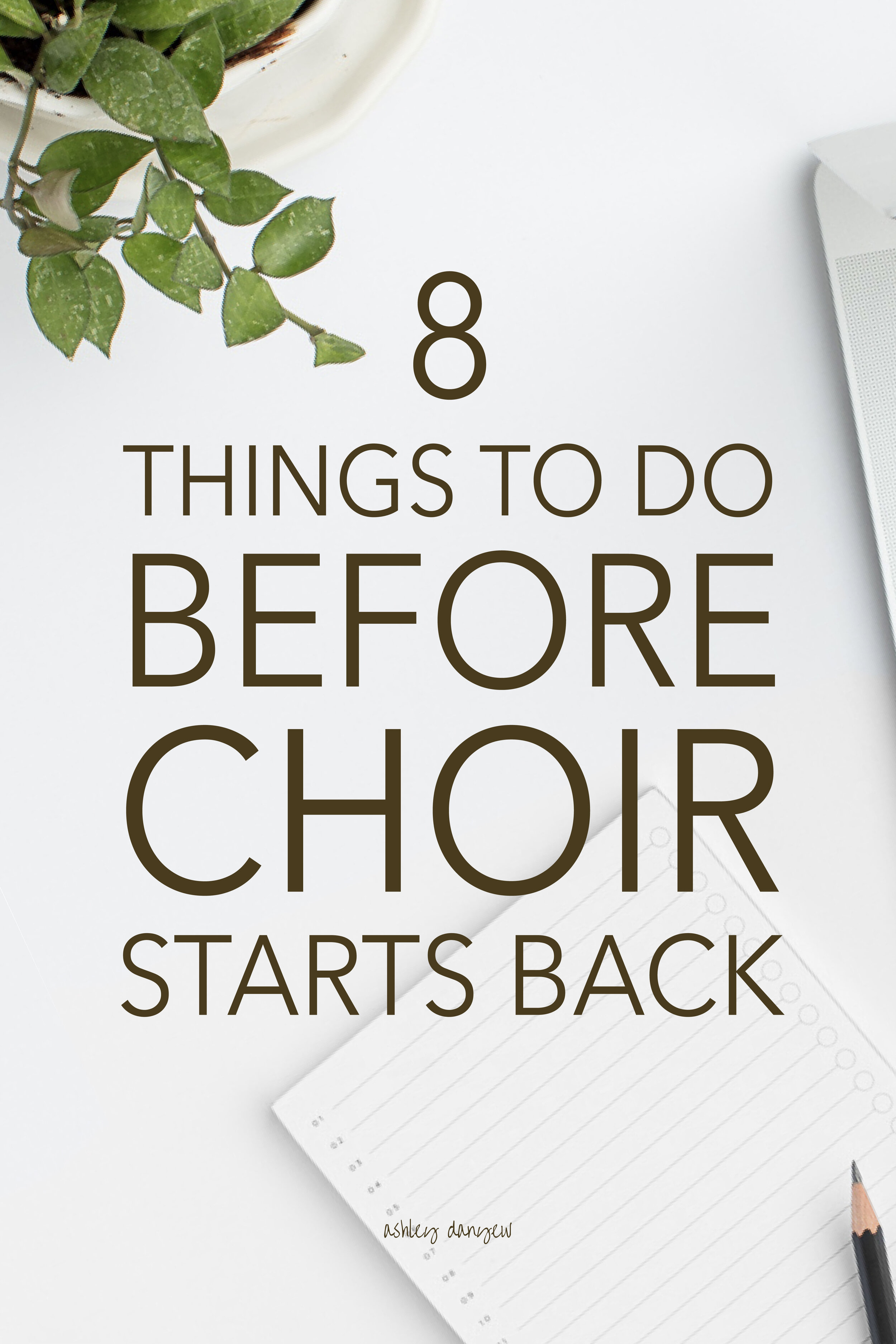Making progress, learning, improving. A sense of accomplishment and achievement.
Whether you’re leading a choir, chamber group, studio class, or classroom ensemble, you know what a good rehearsal feels like—focused, efficient, and productive.
There’s energy and momentum and everyone’s engaged and working together.
But balancing musical growth, energy, and goals (while keeping everyone focused and on task) is another story.
In this post, you’ll find seven thoughtful strategies that will help you make the most of your rehearsal time while maintaining a high level of musicality and keeping everyone engaged.
No. 1 - Start on time.
It sounds simple, but this is very important. Punctuality sets the tone for the work you do together. When you begin (and end) your rehearsal (or class or lesson) as scheduled, you communicate professionalism, respect, and intentionality. Over time, it also helps build a culture where focus, preparation, and timeliness are the norm, not the exception.
No. 2 - Go in with a plan.
A productive rehearsal doesn’t just happen; it’s the result of thoughtful planning and sequencing. Spend some time during the week outlining what you’ll rehearse and in what order, and with what goals in mind. Aim for a balance of technical, musical, and high-energy pieces to maintain engagement (this is true for classes and private lessons, too).
If you’re working with older students or adults, it can be helpful to share a visible rehearsal order—on the board, printed on a half-sheet, or projected. This way, they can see where you’re headed, get their music in order, and stay focused.
Related post: How to Plan a Productive Choir Rehearsal
No. 3 - Distribute music in advance.
Distributing music during rehearsal wastes so much time. Instead, whenever possible, distribute scores, handouts, or parts before rehearsal. If your group uses digital scores, create a shared Google Drive folder with clearly labeled PDFs and email everyone ahead of time to let them know new music is available.
This way, you can spend your rehearsal time actually rehearsing. Try to handle the administrative tasks outside of rehearsal time.
No. 4 - Keep sharpened pencils on hand.
A well-marked score saves time in practice sessions, classes, rehearsals, and lessons. This prevents repeat errors and encourages accountability—musicians who take ownership of their music learn faster. Keep a jar of sharpened pencils close by, where people can grab one if needed without disrupting rehearsal or distracting their neighbors.
No. 5 - Build in a break.
We all have limited attention (especially these days). Build in a brief reset halfway through your rehearsal—time to stand, stretch, or talk to a neighbor for a few minutes. A short, structured break can actually increase productivity by giving everyone a chance to recharge before the second half. Plus, learning is often solidified when we give the brain a short break.
No. 6 - Don't always start at the beginning.
Often, it's not the beginning of a piece that needs work—it's the middle or the end. Rehearsal time is limited, so choose carefully which sections you need to spend time on. Identify the musical moments that need the most attention—transitions, difficult harmonies, tempo changes, ensemble balance—and start there.
When you're first starting a piece, I recommend reading all the way through, or at least getting a sense of the piece before breaking it apart into sections or focusing on the details. But when you're really working on a piece (the middle few weeks of the rehearsal sequence), you may start in the middle, rehearse one section at a time, or start at the end and work backwards. In the final weeks of preparation, focus on putting it all back together—musical shape and continuity.
Related post: My Step-By-Step Process for Rehearsing a New Anthem
No. 7 - Keep a quick pace.
Momentum is everything in rehearsal. Ensembles often mirror their director’s pace; if you move efficiently, they will too. Set a quick pace—not rushed or frantic, but purposeful and focused. Keep transitions tight, minimize tangents and storytelling, and model a commitment to getting work done.
If you need to work with just one section, challenge the rest of the ensemble to think their parts or listen critically to balance, breath, or dynamics. Keep them actively engaged.
Feel more confident directing your adult choir—every single week.
Join me in the Adult Choir Course and get the teaching strategies, leadership skills, and practical tools you need to run better, more musical rehearsals—week after week. Lead with more confidence. Teach with more clarity and intention. Get more out of your rehearsals.
Summary
Effective rehearsals are built through consistency, planning, and intention. The more structure and clarity you bring, the more your ensemble can focus on what really matters: making music together.
I’d love to hear from you:
What strategies help you run productive rehearsals? Share your ideas in the comments—I’d love to hear them.






































